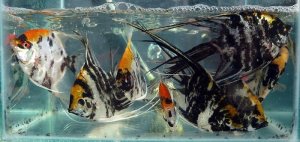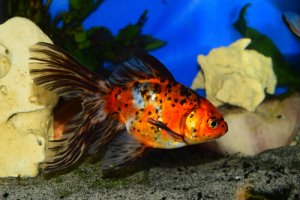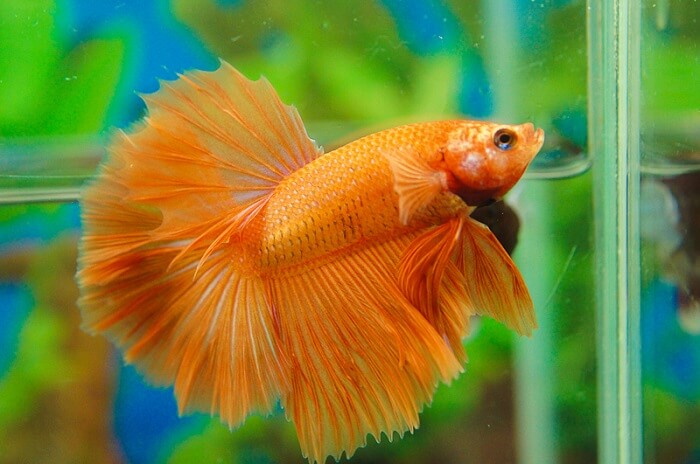
Breed Overview
| Origin | Thailand, Vietnam, Cambodia, and Laos |
| Lifespan | 2-5 years |
| Size | 2-3”/7-8cm |
| Colour | Vibrant colors, but most commonly red or blue |
| Food | Carnivorous |
| Tank Size | Minimum 20 gallons/76 liters |
| Temperament | Intelligent, curious, yet can be aggressive |
| Water Type | Freshwater |
| Water Temperature | 74-82F/23-28C |
| Water pH | 7 (can range from 6.5-7.5) |
| Difficulty Level | Intermediate |
Species Summary
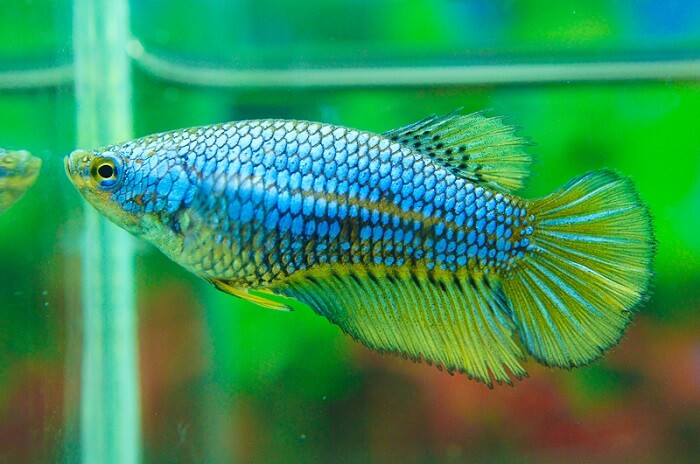
The betta fish, or betta splendens, is a spectacular-looking tropical fish with long, flowing fins that can take a number of shapes and styles. The betta was first domesticated in the rice paddies of southeast Asia, in countries such as Vietnam, Laos, Cambodia, and Thailand.
However, wild bettas originally looked very different from their domesticated counterparts. Domesticated bettas were in fact selectively bred to display the amazing colors we see today.
In its native country, the betta fish is known for its aggression, and there are two subtypes of domesticated betta – those for fighting, and those that are ornamental. Yet, even with ornamental fish, it’s recommended that you never keep two male betta fish in the same tank. Apart from this, these are rewarding and relatively easy fish to take care of, so read on to find out more about setting up a halfmoon betta fish tank.
Tank Setup And Maintenance
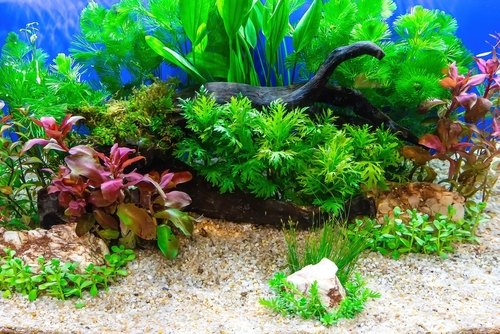
1. Water Parameters And Tank Design
You may have read that the ideal tank size for a betta fish is 10 gallons (30 liters), but an ideal tank is 20 gallons/76 liters or more. Your fish will in turn reward you for this with more interactive behavior and fewer issues with sickness and aggression.
Ideal tank parameters are a temperature of 74-82F/23-28C, neutral pH, and a filter flow rate of around 4x the tank capacity should be ideal. Betta fish are not strong swimmers, so a sponge filter is best for them. These tend to release a gentle stream of bubbles at the top and do not have any sideflow. To maintain the tank, it’s best to change the water every 7-10 days and wash the filter sponge with tank water every three months or so.
Author’s Note: The lower the density of fish in the tank, the more easily they can avoid each other. As a result, your tank will experience less bullying and harassment of smaller fish, and all the fish in your tank will be happier!
Plants And Setup:
As the betta fish is highly intelligent, it helps to give them an interesting environment. In fact, your halfmoon betta will simply love hiding places. This means in plants, next to rocks, in caves, and under bits of driftwood. Good plants include java moss, java fern, and water wisteria.
2. Tankmates
You may have heard that betta fish can be aggressive. However, this is generally towards the same species or others that are similar enough to be seen as competition. These are generally colorful fish with showy fins, like male guppies. On top of this, it is generally only the males that exhibit this level of aggression. Females can be hierarchical, but they can happily be kept in a sorority tank in a group of 5-6 females.
If you pick your tankmates correctly, there’s no reason you can’t have a betta fish that coexists peacefully with other shoaling or bottom-dwelling fish. Good options include harlequin rasboras, kuhli loaches, and cory catfish.
3. Sourcing And Choosing A Halfmoon Betta Fish
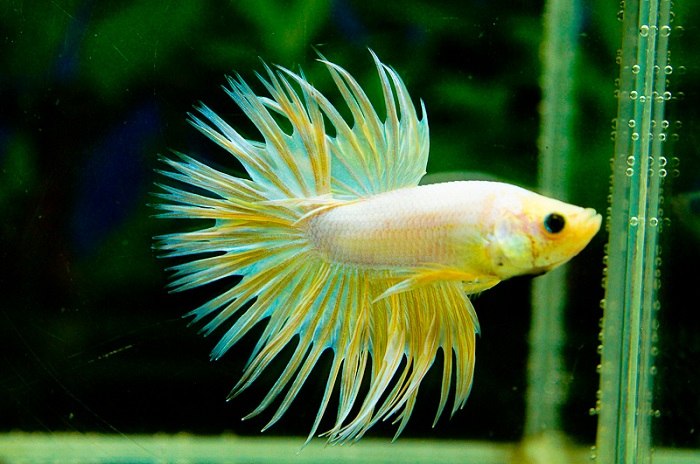
The origins of the betta fish are mysterious and whilst a majority of pet store fish are bred in captivity, especially as this is one of the only ways of controlling which colors and patterns develop, wild betta fish are still used for broodstock (captive breeding) in countries such as Indonesia.
Either way, the betta gene pool is complex and diverse. The majority of pet store bettas will be veiltail bettas, not halfmoons. How to tell the difference? Simply put, the tail of the halfmoon betta fish makes a perfect semicircle when flared out in the water, like a halfmoon, which is how it got its name.
If you’re looking for a halfmoon betta, it is often best to go to a specialist betta fish breeder. However, larger aquatics stores do occasionally carry halfmoon betta fish too.
Male Versus Female Betta Fish
Regardless of tail type, in a pet store most betta fish on immediate display will be males, as these have much showier fins and coloration. Female betta fish of any kind tend to have much shorter tails. You will be able to spot a female as they are generally kept with other females, too.
Although it is generally the male people tend to think of when they imagine a halfmoon betta fish, females can be just as rewarding to keep. Either way, it’s good to choose a fish that has vibrant colors, as sickness or stress are reasons why betta fish lose their color.
Feeding
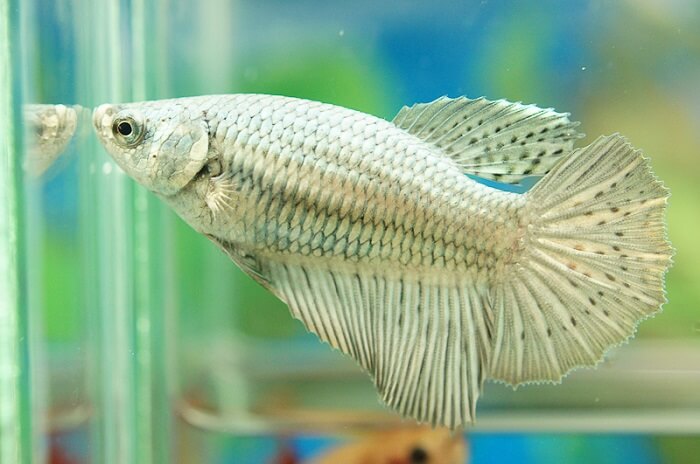
Picking food for betta fish can be a tricky task as they are sensitive and won’t take well to average tropical fish food. Your betta cannot go without food for long, so it’s important to ensure you feed them correctly.
Feed a small amount of frozen protein or specialist betta food once or twice a day. This should be about the size of your fish’s eye. In addition, give your fish one day of no food to clean its digestive system.
What If My Halfmoon Betta Fish Refuses To Eat?
Betta fish are notorious for being picky eaters. This isn’t always a sign of illness! Remember, unlike most tropical fish, these guys are fully carnivorous. You can feed live or frozen daphnia, brine shrimps, bloodworms, tubifex worms and mosquito larvae to see if they will respond to different food.
Otherwise, your fish not eating might be a sign of a more serious illness or disease. However, this is generally accompanied by other symptoms such as lethargy.
Behavior And Temperament
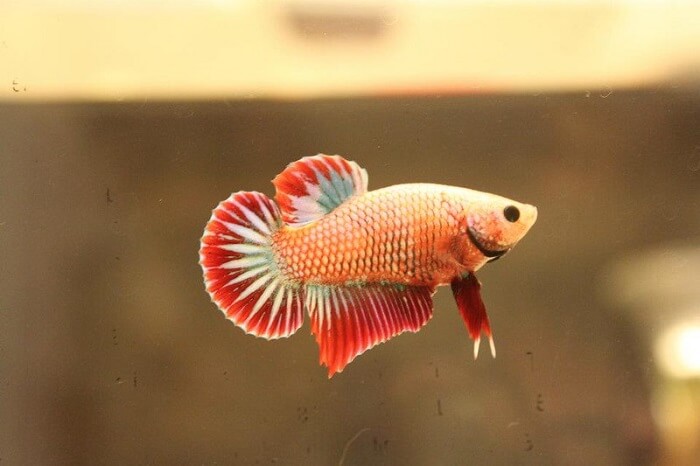
One of the things that appeal most to betta fish owners is how interactive these fish are. Not only will they recognize their owners, but they also love to explore. You will catch your halfmoon betta playing hide and seek in different places or relaxing, although if your betta fish is not moving this can mean anything from sickness to it simply being asleep. An exceptionally happy male betta will even build a bubble nest at the surface of the water.
Aggression In Male Halfmoon Betta Fish
You may have wondered ‘are betta fish aggressive’, and in truth, these fish are only aggressive to the same sex, as they see them as competition. However, the practice of fish fighting as these fish were domesticated actually led to genetic changes that coded for increased aggression.
You may have heard that holding a mirror to the side of your fish’s tank will cause them to act aggressively towards it. However, these displays of aggression mean the fish uses up a lot more oxygen and ultimately are stressful and tiring. It’s best not to do this and instead to give your fish maximum stimulation with an enriched environment.
Author’s Note: Betta fish love to sleep in unusual places! You may catch them by a rock, nestles in between plants, or even near the filter. Sometimes this can shock new owners, who fear their fish is sick or dead, but generally in this state they still show signs of life. In this case, try your fish with its favorite food. The chances are, it was just asleep!
Pests And Diseases
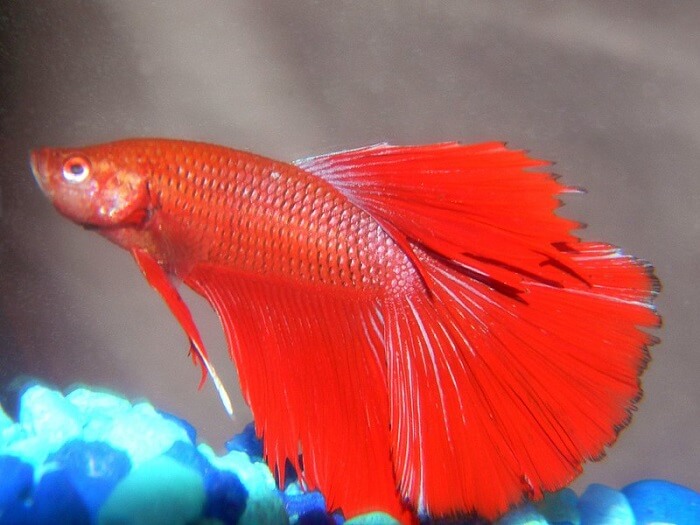
1. Fin Rot
Fin rot is an unpleasant-looking disease. This is a bacterial infection that attacks your fish’s fins and you may be alarmed to see red and white patches appearing at the edges of your fish’s fins.
It’s best to remove your fish to a totally separate tank, if you have tankmates, and treat with over-the-counter antibiotics as soon as possible. However, if your fish is housed alone, you can simply add these to the tank it is already in.
2. Swim Bladder Disease
The halfmoon betta doesn’t swim very well, as it is hampered by its long tail. However, it should be able to glide gracefully through the water. If, on the other hand, you begin to see it struggling to stay afloat or wobbling from side to side, this can be a sign of swim bladder disease, an infection of the organ your fish uses to stay afloat, and which is normally bacterial. It can be treated by isolating the fish and using over-the-counter antibiotics.
3. Velvet Disease
Velvet disease is caused by the parasite piscinoodinium and is important to diagnose in the early stages. It can be a reason your betta fish is not eating, but you will also see your fish rubbing itself against the sides of the tank or objects like rocks and driftwood.
Velvet disease is common in bettas, but it’s still important to catch it early and treat the fish with over-the-counter medication (there are several options) in a separate tank.
Breeding
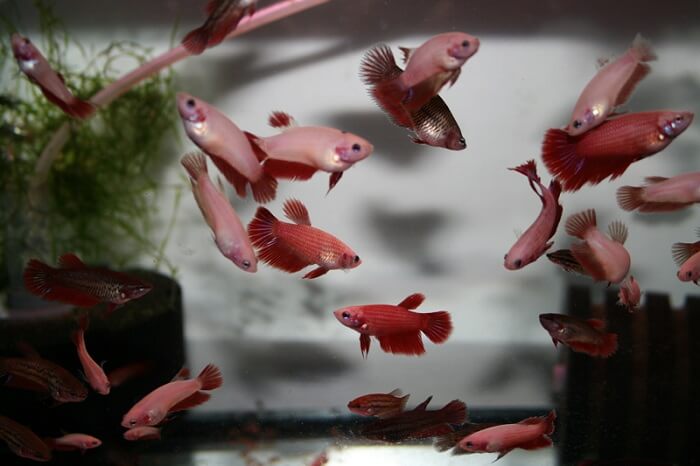
Breeding betta fish is a challenging endeavor and if it’s your first time keeping them, it’s unlikely you’ll want to do this. However, if you’ve already kept bettas of different varieties, and are wondering how betta fish mate, the halfmoon betta is no different in its breeding habits.
The one thing to note is that this fish is actually slightly more aggressive than other kinds of bettas, possibly because of its larger, flashier tail which attracts more attention from rivals, although science doesn’t know yet for sure.
1. Introducing The Halfmoon Betta Fish Male
Introducing the male to the female is a delicate task because the male can be aggressive if this is done too suddenly. The fact is males, will see other betta fish as a challenge to their territory – luckily, this is less likely to happen with a female. However, it’s best either way to ensure your fish are in the mood to mate before you introduce them.
You can do this by creating a separate breeding tank with a dividing barrier that your fish can see through. Put the male on one side and the female on another. You will see that if the female is ready to accept the male, she will develop vertical stripes on her body.
Author’s Note: One particularly special thing to see is how the male responds to the female. To indicate his readiness, he will generally start building a bubble nest. However, he will also wiggle his body and wave his fins in a way that looks almost as if he is ‘flirting!’. Once you have seen these things occur you will know it is safe to take away the dividing barrier.
2. Betta Fish Mating Behavior
Don’t be alarmed by the betta mating process. It is sometimes hard to differentiate courtship behavior from aggression in these fish, however, a sure sign that mating is going on is that the male wraps his body around the female. This actually has the added benefit of helping push the eggs out.
Once the eggs are laid, the male will spray his milt onto them like with most species of fish. Now it’s time to separate the fish again – this is hugely important.
3. Protecting The Eggs
All species of betta fish, including betta splendens, to which the halfmoon betta belongs, are egg-brooding fish. This means they either carry the eggs in their mouth, or they build a bubble nest. In the case of your halfmoon betta, the bubble nest is used to protect eggs, and after fertilization, you will see the male carefully guarding the nest and eggs.
These generally hatch in 2-3 days. However, after this period, it’s best to remove the male and put him back in his original tank. Aggression towards the fry is not uncommon.
Author’s Note: The bubble nest is also a way that the female chooses whether or not to accept the male as a mate. In fact, as part of the courtship ritual, she will inspect the nest and see if it is suitable. If not, she generally will turn him down.
4. Raising The Fry
Generally, the fry can find their own food. They can actually exist off the egg sacs they hatched from until they are old enough to swim. After this point, the best food is egg yolk, as the fry will still be too small to eat live food or other chopped-up protein.
As your fish grow, you can introduce other foods as with an adult betta. Generally, fry mature in about 2 months, after which point, they should be separated.
Final Thoughts
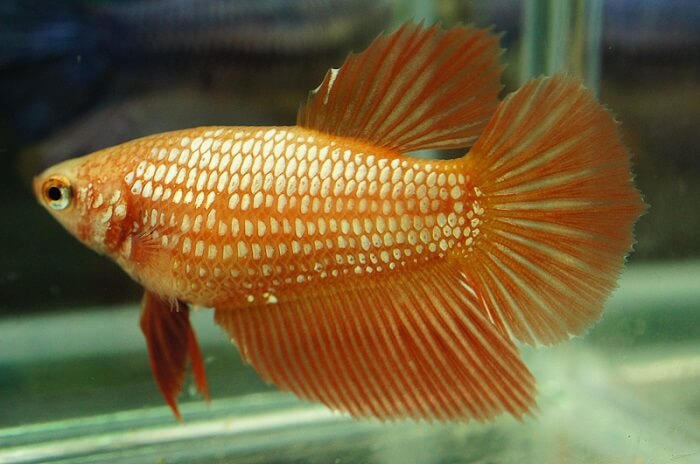
Betta fish are one of the most popular tropical aquarium fish out there, and it’s not hard to see why! With their trailing fins, vibrant colors, and unique personalities, they create a mesmerizing and interactive experience, and the halfmoon betta is no different. Though this is a relatively delicate fish, ultimately, they are a rich and rewarding pet to keep.


